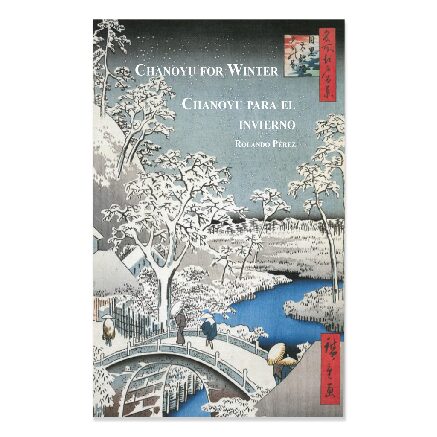With an Introduction by Mr. Patterson and
a Foreword by historiographer John Strausbaugh.
ISBN: 978-1-887276-57-3 Publication Date: APRIL 25th, 2022 19.95 Paper back
ABOUT THE BOOK
Since arriving from Canada with his wife Elsa in in 1979, no one has been more identified with Manhattan’s unique Lower East Side culture than artist, activist, gallerist and archivist Clayton Patterson.
The Seven-Letter Word Game is a playful departure from his previous books. As an editor and publisher, he has marshalled scores of writers to compile large, richly-detailed histories of his Lower East Side neighborhood, such as the three-volume Jews: A People’s History of the Lower East Side and Resistance: A Radical Social and Political History of the Lower East Side.
The Seven-Letter Word Game is something completely different, a gallery of his mysterious, whimsical hand-drawn sigils. He explains them this way:
“The Seven-Letter Word Game is a game made up of drawings that contain seven letters. The letters are always the same. The letters spell a word. The word is always the same. The letters are only used once. It is possible there are mistakes in these drawings. It is possible there are mistakes in these drawings. See if you can discover the word. See if you can find any mistakes.”
As different as this slim volume is from his other books, The Seven-Letter Word Game is just as connected to the Lower East Side. For years his neighbors, mostly Hispanic, came by his Essex Street storefront to have him take their pictures in front of his richly-graffitied door. Before giving them their photos, he often signed them with a Seven-Letter symbol. The game for them was to guess what the word was. “Since the seven letters were always the same, my game was to keep developing different images.”
In The Seven-Letter Word Game they march by alphabetically, 111 charming images, from Airplane through Giraffe to Masked Man and Siamese Cat to WWII Machine Gun. All spell the same word. See if you can guess what it is.
ABOUT THE AUTHOR
Clayton Patterson 10.19.21
My wife Elsa and I came to New York City from Canada in 1979. We went to work as printmakers at a top shop and did well. I had successful solo sculpture shows in Soho, the epicenter of the art world at the time, and my work sold to good collections. One of the most interesting places where I showed my art was an antiquarian bookstore owned by a man named Jean Noel Herlin. There I was introduced to some amazing non-mainstream art, such as the mail art of Ray Johnson and the collages of John Evans. What interested me was the way they used restricted space and a limited visual vocabulary to make art that was like solving a puzzle. Obviously they influenced my Seven-Letter Word Game.
As artists Elsa and I had a choice of a career or an adventure. The career came with too many rules, obligations, too much conformity and gossip. We went for adventure. In 1983 we bought a small storefront building on the Lower East Side, in a 24-hour drug zone. On our first night there was a shooting across the street. To be self-supporting we created Clayton Caps, a new twist on the classic American baseball cap. Walking the streets of the neighborhood opened an amazing body of photography. Over the years I developed probably the largest inner-city archive in America, hundreds of thousands of photos, plus videos and street ephemera. I posed many subjects, especially the neighborhood’s Hispanic young people, in front of our graffiti-tagged front door, and posted some of these portrait photos in the storefront window beside the door, which got to be known around the neighborhood as the Hall of Fame. I “signed” the backs of some of these photographs with the Seven-Letter Word Game.
In 1988 Elsa and I made a video that became known as the Tompkins Square Park Police Riot tape. It was the first time a handheld, commercially available video camera was used to hold police accountable. I went on Oprah’s show and declared, “Little Brother is now watching Big Brother.” It changed the way police protests are done and inspired Ai Wei Wei to use cameras to confront the authorities in China when he returned there from New York in the 1990s.
In 1986 we turned our storefront into the Clayton Gallery & Outlaw Art Museum, which has shown a galaxy of artists overlooked by the standard art world hype. Since 2013 I have organized the annual Acker Awards to pay tribute to such artists and the community members who support them. I have also edited and published a number of books on Lower East Side history, culture and politics. The more the neighborhood has been gentrified, the more important it is to preserve the history of what has been lost.
The painter/filmmaker Ari Roussimoff and I started the Tattoo Society of New York. Tattooing was illegal in New York and very underground at the time; the society created a sense of community. I was one of the key lobbyists for the legalization of tattooing in 1997, and helped organize the first New York Tattoo Convention the following year, as well as a traveling European tattoo festival called Wildstyle and Tattoo Messe. The filmmakers Dan Levin and Ben Solomon made a documentary feature about Elsa and me, Captured, released in 2008. We’ve also been portrayed in graphic novel style in the book Clayton: Godfather of Lower East Side Documentary, edited by Julian Voloj, with work by eighteen artists, published in 2020.
See if you can find the seven letters in these three entries


















